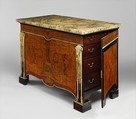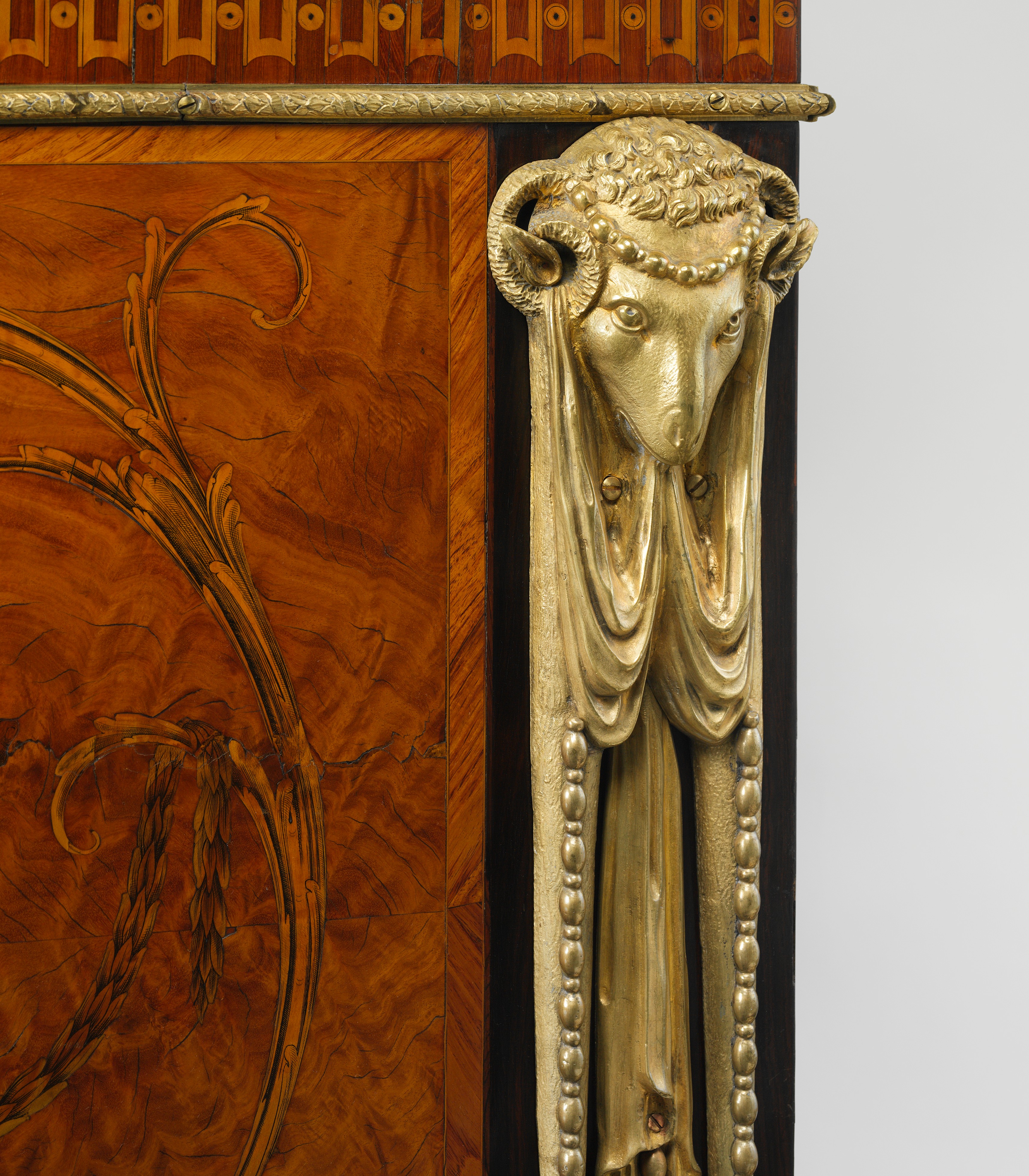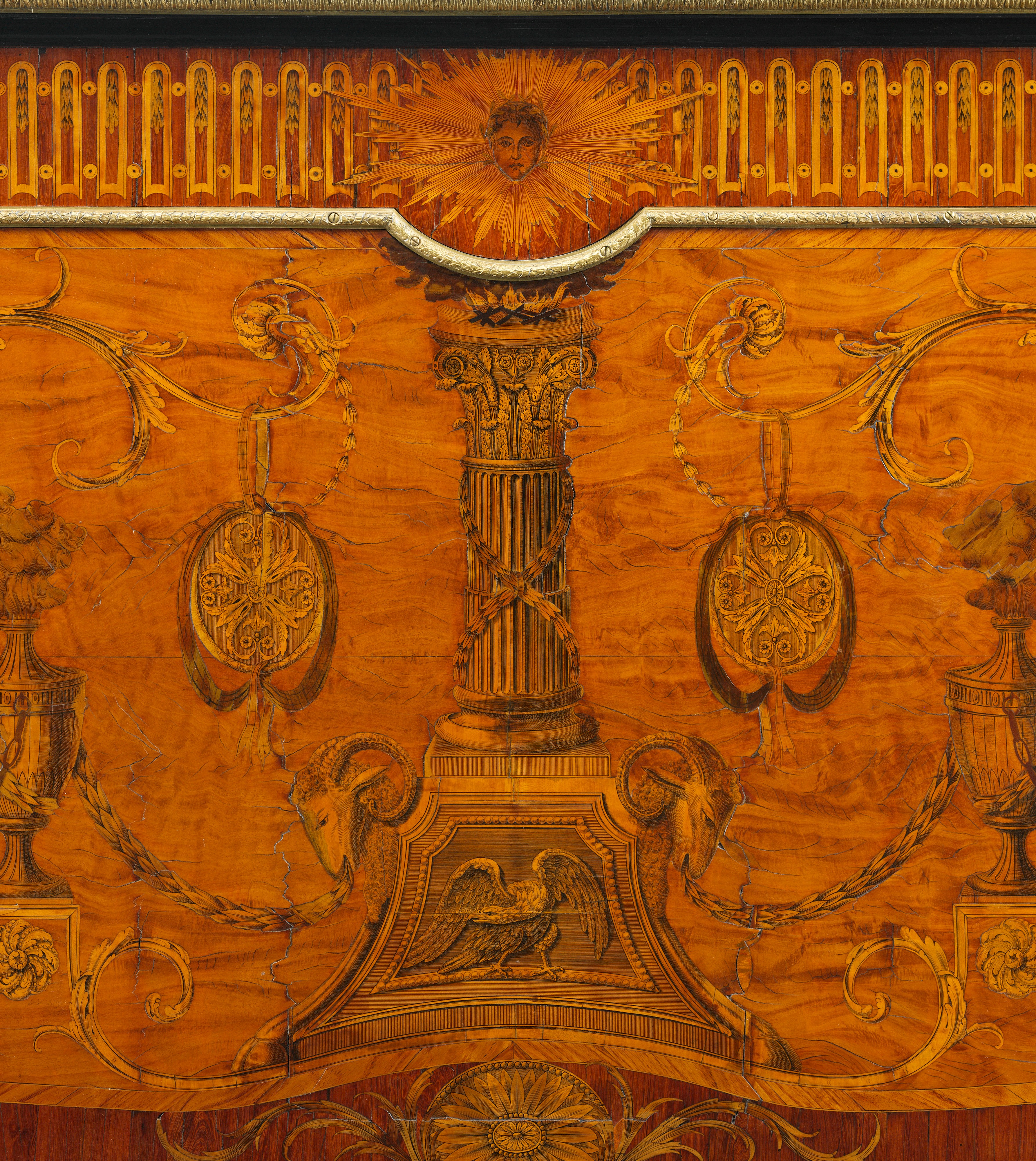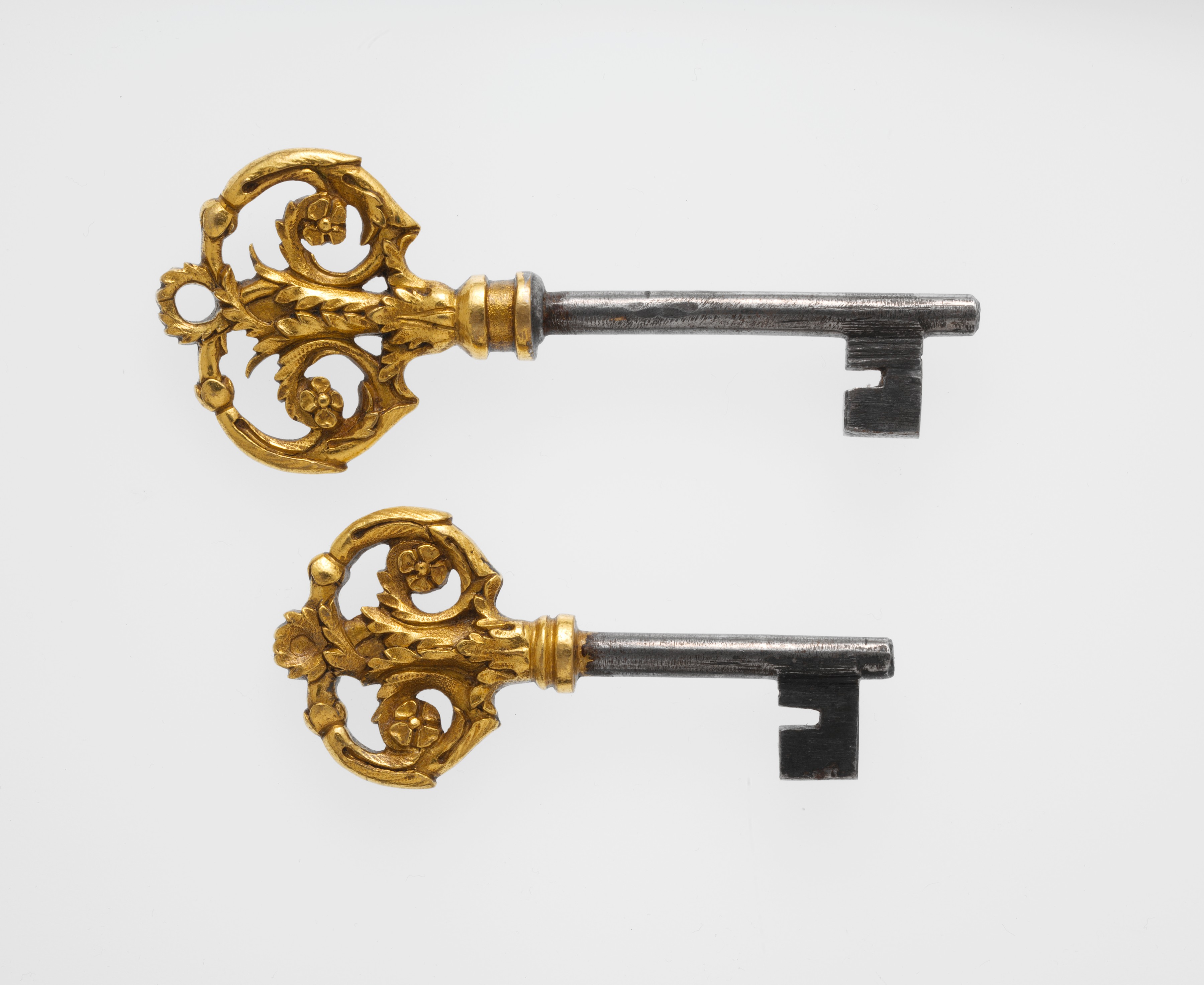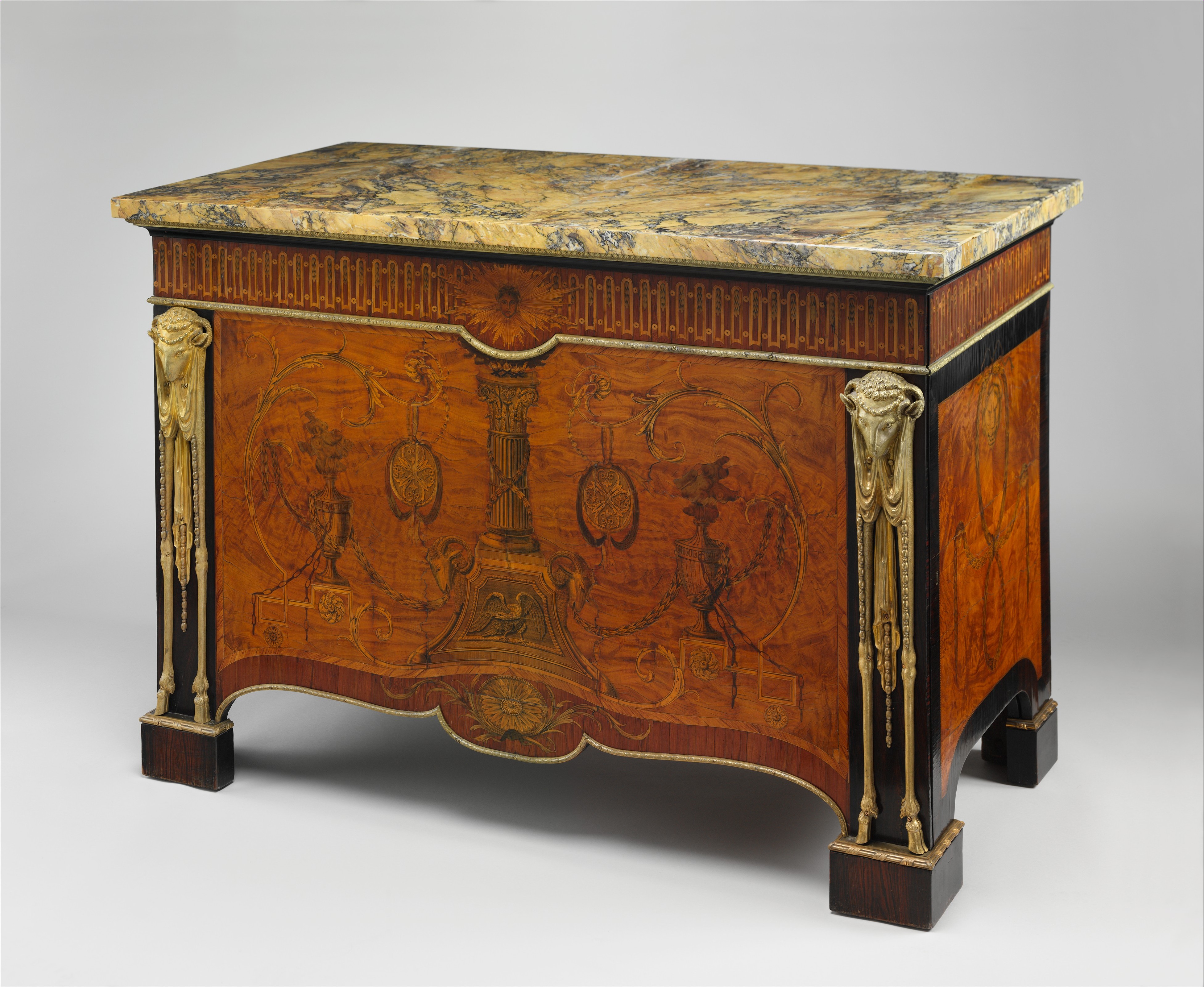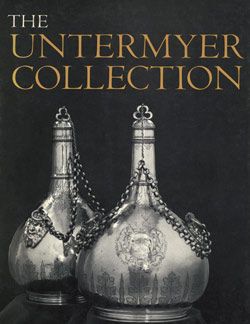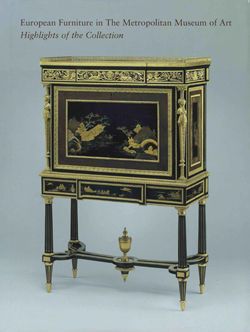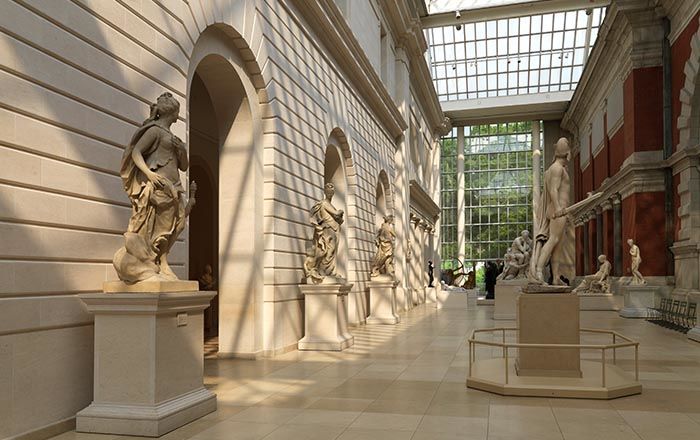Commode
Attributed to John Mayhew British
Attributed to William Ince British
This commode is attributed to William Ince and John Mayhew, who jointly ran one of the most successful cabinetmaking firms in eighteenth-century London. Ince offered design expertise, while Mayhew managed business affairs; the pair also worked closely with carvers, gilders, and other specialists across their workshops.
Ince and Mayhew were renowned for their innovative use of marquetry—a technique in which pieces of wood are veneered or inlaid into furniture to form designs. Commodes decorated with a single large marquetry panel on the front are rare in English furniture of this period. Access to the interior is gained not by this panel, but by two doors at the sides, each of which conceals four mahogany drawers.
The mounts and moldings of this commode, including the stylized rams, have been attributed to Matthew Boulton, celebrated for his work in gilt bronze.
This image cannot be enlarged, viewed at full screen, or downloaded.
This artwork is meant to be viewed from right to left. Scroll left to view more.
